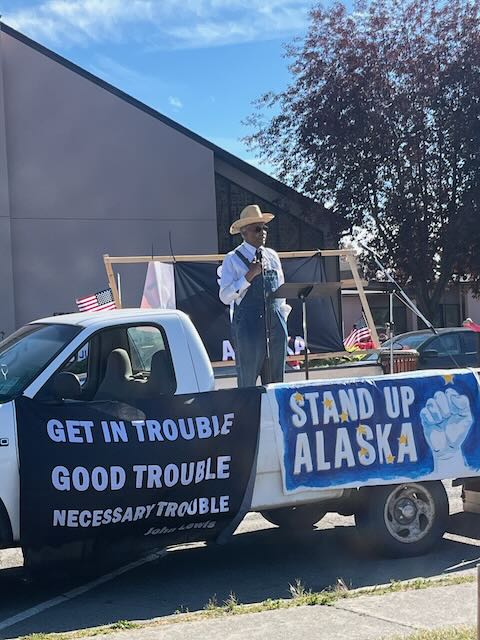And today again I saw someone going in.. So biked over to the entrance and the man came out. I asked what was
happening and he said he didn't really know. But Totem was pretty much closed down. I asked about the possibilities I've thought about as I've come by here over the summer. The individual theaters could be used for church services, for musical events, theater, speakers, weddings, all sorts of things. Even showing movies.
He said it was a Regal theater - like the Dimond Mall theaters and Tikahtnu. That the company is owned by a corporation in England.
When I got home I looked it up. Wikipedia has a long piece on them.
"Regal Cineworld Group (trading as Cineworld) is a British cinema chain and operator. Headquartered in London, England, it is the world's second-largest cinema chain (after AMC Theatres), with 9,139 screens across 747 sites[3] in 10 countries:[4] Bulgaria, Czech Republic, Hungary, Ireland, Israel, Poland, Romania, Slovakia, the United Kingdom and the United States.[5][6] The group's primary brands are Cineworld Cinemas and Picturehouse in the United Kingdom and Ireland, Cinema City in Eastern and Central Europe, Planet in Israel, and Regal Cinemas in the United States."
There's a long history including being bought by Blackstone private equity company and then later being sold, buying Regal, COVID, bankruptcy, not necessarily in that order.
Regal, by the way, is headquartered in Knoxville, Tennessee.
"By 2001, Regal was overextended, and went into Chapter 11 bankruptcy. It became the namesake for the theater chain in which it would be merged into with the Edwards and United Artists chains.[10][11]
When all three chains went into bankruptcy, investor Philip Anschutz bought substantial investments in all three companies, becoming majority owner.[18] In 2002, Anschutz consolidated his three theatre holdings under a new parent company, Regal Entertainment Group.[19] Regal's Mike Campbell and UA's Kurt Hall were named co-CEOs, with Campbell overseeing the theatre operations from Regal Cinemas' headquarters in Knoxville, and Kurt Hall heading up a new subsidiary, Regal CineMedia, from the UA offices in Centennial, Colorado. The Edwards corporate offices were closed." (from Wikipedia)
The movie theater business has had tough times since Blockbuster came on the scene. Then streaming video added to the problem and bigger and bigger home screens, and of course, COVID.
But what happens to a community like Anchorage when big pieces of real estate are owned by far away - Knoxville and London - corporations? What say do we have? Who do we talk to and why would they even care? It doesn't seem to be for sale, yet. The building and the parking lot are pretty big. But at the moment we're losing population. Who locally would buy it? A developer?
The man I talked to said that the Totem theater was his first job when he was 16 years old. He stayed with the company until he was 19, when they first got bought out. That there were a lot of changes all at once so he decided to leave and try something else.
One day, he said, the general manager, who was also his good friend, called and jokingly asked if he wanted to work at the Totem again, and the he surprised his general manager friend by saying yes. That was when he was 21.
He said he is 26 now and that he literally 'grew up here" in the building and that he's sad to see it go.
"I'll always appreciated the buiding and what it stood for."
Talking to him I was convinced - vibes as much as words - that he's a serious worker, takes the job to heart, and if I had a position, I'd hire him in a minute.
Then I went over to get a picture of the marquee and I see that across the street from the Totem, the Wayland Baptist University, has a For Sale sign up. If you want to buy it, the number is 907 762 5801.
An Alaska Business magazine article begins:
"Texas-based Wayland Baptist University (WBU) is emptying its Alaska classrooms and transitioning to online instruction only. The school’s campus in Anchorage will be sold, its leased location in Wasilla vacated, and classrooms at Joint Base Elmendorf-Richardson, Fort Wainwright, and Eielson Air Force Base returned to military service."
How many low cost housing units could be built on the Totem's big parking lot? How many empty buildings like WBU do we have now? I say we should look at these as opportunities to reimagine how they can be used and not just let them rot.
[I had almost finished this last night, but left it for today. I noticed that the Anchorage Daily News mentions the closure of the Totem in its story today on businesses that have recently opened and closed.]




















































